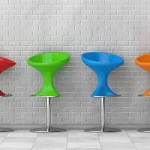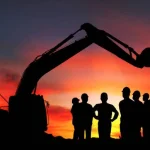Manufacturing is evolving fast, and it’s finally starting to look like the futuristic industry we were promised of integration of welding. Two technologies that once lived on opposite ends of the fabrication spectrum are now intersecting in powerful ways: welding and 3D manufacturing. On their own, each has reshaped industry standards. Together, they’re redefining what’s possible in fabrication, design, and production.
Welding with equipment like that from Lincoln Electric has been the backbone of industrial construction for more than a century. It’s reliable, strong, and essential in industries like aerospace, automotive, infrastructure, and heavy machinery. 3D manufacturing, on the other hand, often referred to as additive manufacturing, is the new kid on the block, offering unmatched design flexibility, rapid prototyping, and precise material layering.
When these two worlds collide, innovation doesn’t just advance. It accelerates.
From Separate Paths to Shared Potential
Historically, welding and 3D printing served distinct purposes. Welders joined material and 3D printers built it from the ground up. But as manufacturers demand faster production, lower material waste, and more durable parts, the line between the two processes is blurring.
One of the biggest game-changers is Wire Arc Additive Manufacturing (WAAM). Think of WAAM as welding’s sophisticated cousin. It uses electric arc welding heat sources to melt metal wire and deposit it layer by layer, essentially 3D printing with metal. The result? Large, structural-grade metal parts are built faster and stronger than traditional 3D printing, without sacrificing precision.
Industries are already taking notice. Aerospace companies are using WAAM for lightweight, high-strength components. Construction firms are testing 3D printed metal joints for infrastructure. Even defense manufacturers are leveraging the hybrid process to create resilient, mission-critical equipment for integration of welding.
Explore the full picture — this related post ties all the key ideas together.
Why the Hybrid Matters
The integration of welding and 3D manufacturing isn’t just impressive. It solves real industry challenges.
- Less Waste, More Efficiency – Traditional manufacturing often involves cutting material away from a larger block, sending excess to the scrap bin. Additive manufacturing builds only what’s needed. Combine that with welding’s strength, and you get parts that are both sustainable and durable.
- Bigger Builds, Faster Production – Standard metal 3D printers struggle with larger components. Welding-based additive manufacturing doesn’t. Massive industrial parts can be printed in hours, not days or weeks, drastically improving production timelines.
- Stronger Parts – Welding metallurgy is engineered for strength and resilience. When those same principles are applied to additive manufacturing, the finished products are tough enough for real-world industrial applications rather than prototypes alone.
- Repair Instead of Replace – One of the most exciting applications is part repair. Instead of discarding an expensive metal component, manufacturers can now 3D print and weld material directly onto worn or damaged sections. This extends product lifespan, reduces costs, and keeps machinery running longer.
Industries Set to Benefit the Most
Numerous industries can benefit from this, including the following.
- Aerospace: Lightweight structures, optimized fuel efficiency, and custom geospatial components
- Automotive: On-demand part manufacturing, reduced lead times, intricate exhaust and engine parts
- Energy: Reinforced turbines, pipes, and mechanical components for oil, gas, and renewable energy
- Construction: Large-scale metal joints, structural reinforcements, and architectural fabrication
- Military & Defense: Rapid production of durable, high-performance equipment or integration of welding
Challenges Still Worth Solving
Of course, progress doesn’t come without obstacles. The biggest challenges include:
- Training gaps: Technicians need skills in both welding and digital fabrication
- Equipment costs: Advanced hybrid manufacturing systems demand substantial investment
- Process standardization: Consistency from build to build must improve as adoption scales
The silver lining? Each of these hurdles is solvable and already being tackled by forward-thinking manufacturers and trade programs.
A Future Forged in Metal and Code
The fusion of welding and 3D manufacturing is more than an industry trend. It’s a foundation for the next era of fabrication. It’s where physical craftsmanship meets digital precision, where durability meets design freedom, and where innovation meets practicality. As demand grows for smarter, faster, stronger production methods, this hybrid approach won’t just shape the future of manufacturing. It will define it.
Uncover new perspectives — explore more ideas that spark creativity today.







